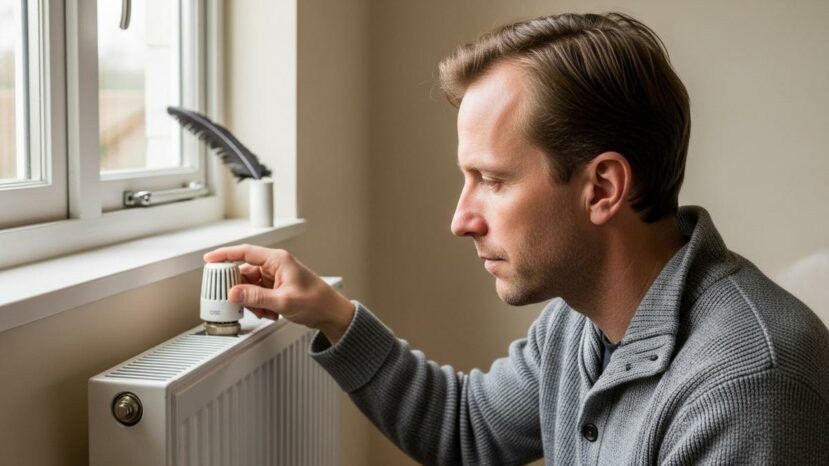Radiators: the little-known adjustments you need to make before winter to lower your energy bill

When the bill climbs, it’s easy to look for something concrete. A discreet adjustment of your radiators can reduce jolts and noise. What’s more, a few simple gestures can limit losses without sacrificing comfort.
The discreet setting you need to know about your radiators
On the thermostatic head, set a stable setpoint of around 19°C in the living area. This way, the knob won’t yo-yo and the heating element will remain even. On the other hand, avoid pushing the knob all the way in and then suddenly turning it off. Your radiators work better with a constant setpoint.
During aeration, switch to a low or frost-free position. After that, ten minutes is enough to renew the air without cooling the walls. Also, don’t turn off the
The head reads the temperature of the air around it, not the water. So avoid glued curtains, covers or furniture. In addition, leave a little space for the air to pass through. As a result, the room measurement remains reliable and the setpoint holds better.
“A simple adjustment, applied every day, carries more weight than sporadic gestures.”
Purging and dusting: two gestures that pay off
Before the cold season sets in, a quick purge removes trapped air. Heat circulates better and noise is reduced. What’s more, it only takes a few minutes with a small container and a wrench. Your radiators will be more consistent from the very first heat-up.
Dust slows convection and clings to the fins. So get a feather duster, angled brush or soft-bristled toothbrush into the nooks and crannies. Target the back and bottom, areas often overlooked. In short, clean radiators exchange heat better.
- Locate the thermostatic head and set a clear setpoint.
- Aim for a daytime temperature of around 19°C in the living room.
- Ventilate for 10 minutes, cutting off the flow occasionally.
- Schedule a purge before winter.
- Dust the fins every month, without using aggressive products.
Temperature, habits and living spaces
Each room has different needs. For example, the living room is comfortable at 19°C, while the bedroom is comfortable at 17°C. What’s more, turn down the heat a little at night or during the day when no one’s around. Your radiators won’t have to make up for big differences.
Keep ventilation short and sweet, rather than a trickle of air all day long. That way, the inertia of the walls remains intact. What’s more, open wide for 10 minutes and close again, then reset the set point. In short, you avoid long-term cooling of the structure.
No precise product reference (brand + model/exact trade name) is cited in the content of the article provided on Cosmopolitan.fr concerning the little-known adjustment to be made on your radiator to avoid exploding the bill.
The text only mentions general advice and generic tools such as the feather duster, the angled brush or the soft bristle toothbrush, without commercial brand names.
What the technology says, without the jargon
A thermostatic head measures the air, then opens or closes the valve. Thus, a curtain or niche distorts the reading and creates cycles that are too short. Also, avoid heat sources stuck around. Your radiators will react in a more stable and predictable way.
Air in the circuit creates cold zones and water noise. Purging restores continuity to the flow. Also, check the system pressure after the operation. In short, well-purged radiators heat more evenly.
The latest benchmarks for sober radiators
Set it once, then let it work. In this way, you avoid costly resets and large deviations. In addition, adjust in
Do not cover the top, even with a decorative board. In this way, convection maintains its natural speed. What’s more, leave a little air under the appliance to allow the room to breathe. In short, air circulation is your best ally for comfort.
Before you leave for a few days, switch to low or frost-free mode. This way, you can protect your home without having to heat for nothing. What’s more, set the temperature back down when you return, then wait





No comments
Post a comment
Always participate in accordance with the law and with respect for others.